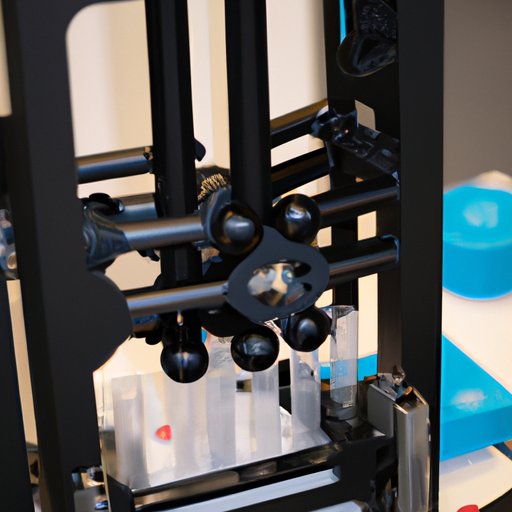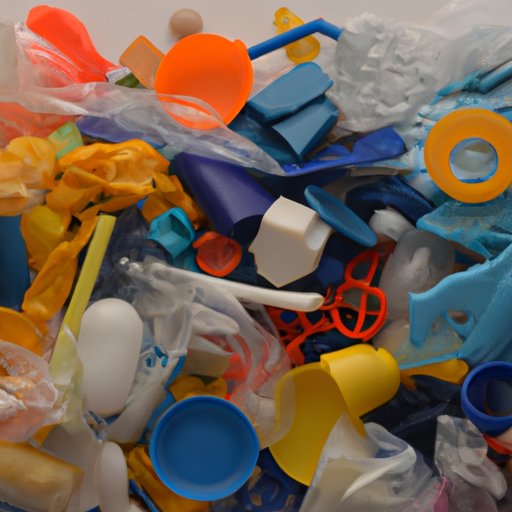Introduction
Plastic has become an integral part of modern life, with countless everyday objects made of or featuring plastic components. But who invented this ubiquitous material? This article will explore the history, development, and impact of plastic, as well as the potential future of plastic manufacturing and technology.

Biographical Sketch of Inventor of Plastic
The inventor of plastic was Alexander Parkes, an Englishman born in Birmingham in 1813. He first demonstrated his invention, a form of celluloid called Parkesine, at the 1862 Great International Exhibition in London. Parkesine was made from a combination of nitrocellulose and camphor, and could be molded when heated and shaped when cooled.
Parkes had initially developed the material for use as a substitute for ivory, but he soon realized that it had other potential applications. After the exhibition, he began working on ways to mass-produce the material, and in 1866 he patented it, naming it Parkesine. Unfortunately, the business venture failed due to production difficulties, and the patent expired in 1868.
History and Development of Plastic from Invention to Present Day
Since Parkes’ invention, plastic has come a long way. In 1907, Leo Baekeland invented Bakelite, the first fully synthetic plastic. Bakelite was durable and heat-resistant, and quickly found many uses in industry, such as electrical insulators and parts for radios. By the 1950s, plastics had become widely used in consumer products, such as toys and household items.
Since then, plastics have been improved and modified to meet specific needs. For example, polyethylene, which is now the most common type of plastic, was first developed in 1933. Another popular plastic, polypropylene, was invented in 1954. These two types of plastic are now used in everything from food packaging to automobile parts.
Plastic has continued to evolve over the years. Recent developments include bioplastics, which are made from renewable materials such as corn starch and vegetable oil, and nanocomposite plastics, which are stronger and more heat resistant than traditional plastics.

The Impact of Plastic on Society and Industry
Plastic has had a profound impact on society and industry. It is cheap, lightweight, and versatile, making it ideal for a wide variety of applications. From medical equipment to furniture, plastic can be used to make almost anything. It is also incredibly durable, meaning it can last for decades without degrading.
Plastic has also revolutionized the packaging industry. According to a study by the American Chemistry Council, plastic packaging is lighter and more cost-effective than other materials such as glass or tin. This has enabled manufacturers to reduce their packaging costs while still providing consumers with safe and efficient products.
However, there are some drawbacks to plastic. It is not biodegradable, meaning it can take hundreds of years to break down in the environment, leading to pollution and other environmental problems. Additionally, some types of plastic, such as polystyrene, can leach chemicals into food and beverages.

Exploring the Future of Plastic Manufacturing and Technology
Despite the potential drawbacks, plastic remains a crucial material for modern society. Scientists and engineers are continually working to improve existing plastics and develop new ones with better properties. For example, researchers are exploring ways to make plastics that are biodegradable, recyclable, and compostable.
In addition, scientists are looking for ways to make plastics more sustainable. One promising area of research is bio-based plastics, which are made from plant-based materials such as corn starch and vegetable oil. These materials are renewable and can help reduce greenhouse gas emissions associated with traditional plastics.
Finally, researchers are exploring ways to make plastic smarter. Smart plastics are designed to sense and respond to their environment, such as changing color or shape in response to temperature or light. These materials could have a wide range of applications, from medical devices to packaging.
Conclusion
In conclusion, plastic has come a long way since its invention in the late 19th century. Its development has been driven by the needs of society and industry, and it has had a major impact on everyday life. Despite potential drawbacks such as pollution, scientists and engineers are continually working to improve existing plastics and develop new ones with better properties. As plastic technology advances, it is likely that its applications will become even more widespread and diverse.
(Note: Is this article not meeting your expectations? Do you have knowledge or insights to share? Unlock new opportunities and expand your reach by joining our authors team. Click Registration to join us and share your expertise with our readers.)
